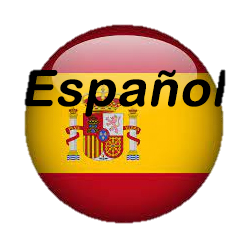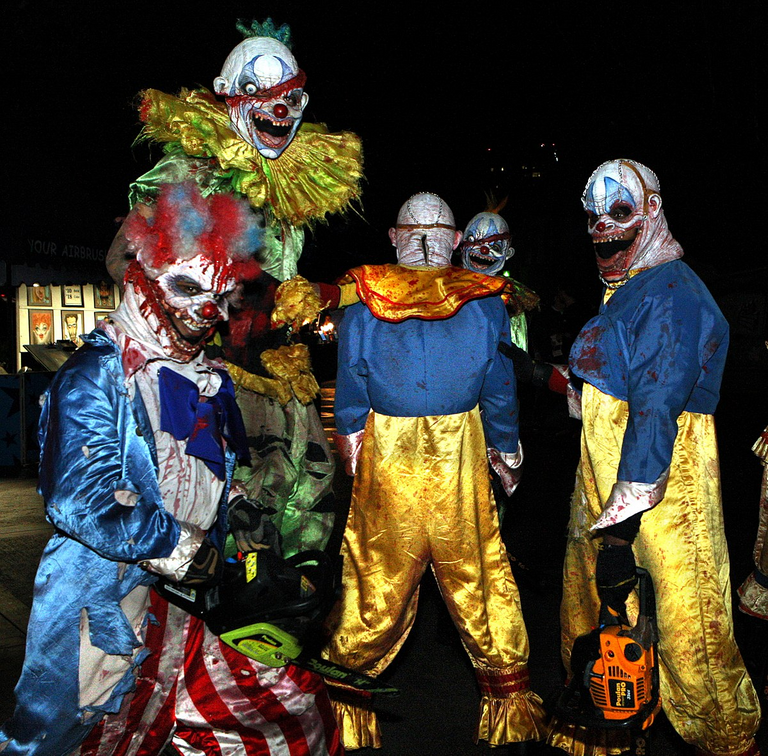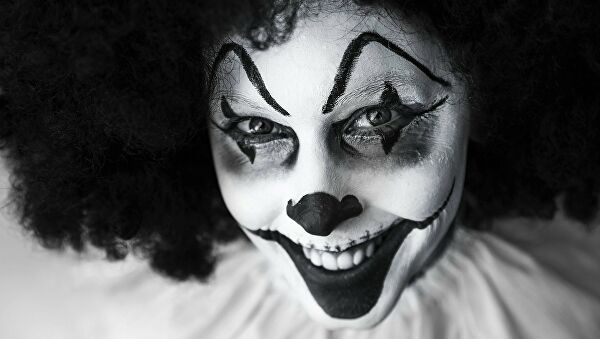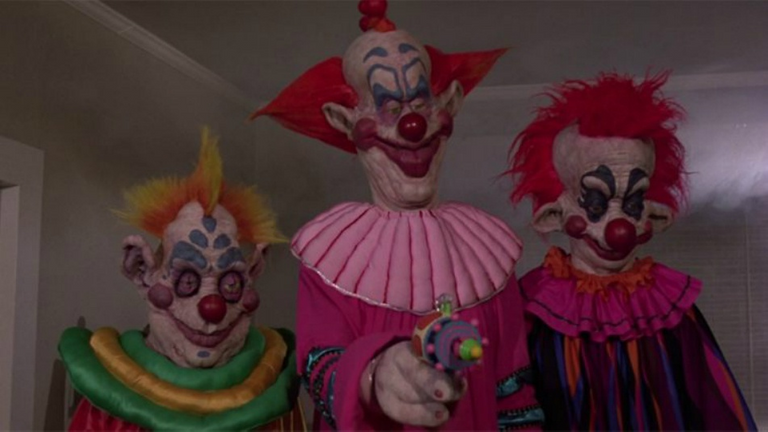Clowns, those adorable people who dedicate their lives to trying to make us smile, what could be wrong with them? Why should anyone be afraid of them? If they are super harmless creatures, right?... RIGHT? Right?.
Payasos, esas adorables personas que dedican su vida tratar de sacarnos una sonrisa ¿Qué pueden tener de malo? ¿Por qué alguien habría de temerles? Si son criaturas super inofensivas ¿Verdad?... ¿VERDAD? ¿Verdad?.

Source | Fuente



The truth is that about this phobia I would say that it is not exaggerated, but we will come to that. This phobia is more commonly presented in children and in some cases it develops more in adolescence and in very rare cases prevails until adulthood. Not for nothing there are so many horror movies with clowns as the main antagonist.
La verdad es que sobre esta fobia diría que no es exagerada, pero ya llegaremos a eso. Esta fobia se presenta más comúnmente en los niños y en algunos casos se desarrolla más en la adolescencia y en muy raros casos prevalece hasta la etapa adulta, aun así cualquiera que vea un payaso con un maquillaje un poco… Incomodo de ver seguramente se asustara, no por nada hay tantas películas de terror con payasos como el antagonista principal.

Source | Fuente

But remember a few paragraphs ago I said that this fear was not entirely irrational? Well this is because throughout modern history we have been given enough reasons to run when we see someone dressed as a clown standing there doing nothing but staring at you or standing where they shouldn't be like outside your house, this is because since time immemorial serial killers, rapists, pedophiles and all kinds of twisted and horrible people have used these disguises to have more contact and closeness with their future victims as well as to hide their identities.
Not to mention the paranormal implications, as many evil entities and creatures also use this appearance to cause terror.
Pero bien, ¿Recuerdan que hace unos párrafos dije que este miedo no era del todo irracional? Pues esto es debido a que a lo largo de la historia moderna se nos ha dado motivos suficientes para correr al ver a alguien vestido de payaso parado sin hacer nada más que verte fijamente o estando donde no debería como en las afueras de tu casa, esto es porque desde tiempos inmemoriales asesinos seriales, violadores, pederastas y toda clase de personas retorcidas y horribles han usado estos disfraces para tener más contacto y cercanía con sus futuras víctimas además de ocultar sus identidades.
Sin contarlas implicaciones paranormales, ya que muchos entes malignos y criaturas usan esta apariencia también para causar terror.

Source | Fuente

Este miedo es tan común que ha inspirados miles de historia y personajes como los más conocidos Pennywise o el Joker.
En conclusión Si ves a un sujeto con disfrazado de payaso llama a la policía, dispárale o cáusale daño con algún objeto contundente de preferencia en la cabeza para ganar tiempo y corre como si no hubiera un mañana.
Okno, no se vayan a tomar esto último en serio.
This fear is so common that it has inspired thousands of stories and characters such as the best known Pennywise or the Joker.
In conclusion, if you see a guy disguised as a clown, call the police, shoot him or hurt him with a blunt object, preferably in the head to gain time and run like there is no tomorrow.
Ok no, don't take the latter seriously.

Source | Fuente
If you are interested in reading my previous Post where I talk about the Arachnophobia tap the word that is in blue.
Si te interesa leer mi anterior Post donde hablo sobre la Aracnofobia toca la palabra que está en azul.
All information used here is knowledge acquired from various forms and sources, use the Wikipedia page to know the origin of the word "Coulro".
Toda la información aquí usada es conocimiento adquirido de diversas formas y fuentes, utilice la página de Wikipedia para saber el origen la palabra “Coulro”

The rewards earned on this comment will go directly to the person sharing the post on Twitter as long as they are registered with @poshtoken. Sign up at https://hiveposh.com.